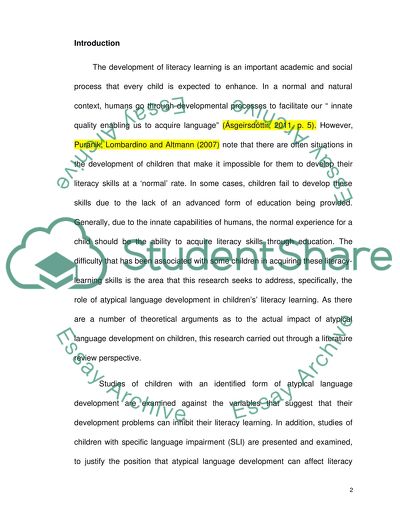Cite this document
(“Atypical language development can impact on childrens literacy Assignment”, n.d.)
Atypical language development can impact on childrens literacy Assignment. Retrieved from https://studentshare.org/education/1653355-atypical-language-development-can-impact-on-childrens-literacy-learning-with-reference-to-children-with-specific-language-impairment-evaluate-the-evidence-that-seeks-to-explain-why-this-is-the-case
Atypical language development can impact on childrens literacy Assignment. Retrieved from https://studentshare.org/education/1653355-atypical-language-development-can-impact-on-childrens-literacy-learning-with-reference-to-children-with-specific-language-impairment-evaluate-the-evidence-that-seeks-to-explain-why-this-is-the-case
(Atypical Language Development Can Impact on Childrens Literacy Assignment)
Atypical Language Development Can Impact on Childrens Literacy Assignment. https://studentshare.org/education/1653355-atypical-language-development-can-impact-on-childrens-literacy-learning-with-reference-to-children-with-specific-language-impairment-evaluate-the-evidence-that-seeks-to-explain-why-this-is-the-case.
Atypical Language Development Can Impact on Childrens Literacy Assignment. https://studentshare.org/education/1653355-atypical-language-development-can-impact-on-childrens-literacy-learning-with-reference-to-children-with-specific-language-impairment-evaluate-the-evidence-that-seeks-to-explain-why-this-is-the-case.
“Atypical Language Development Can Impact on Childrens Literacy Assignment”, n.d. https://studentshare.org/education/1653355-atypical-language-development-can-impact-on-childrens-literacy-learning-with-reference-to-children-with-specific-language-impairment-evaluate-the-evidence-that-seeks-to-explain-why-this-is-the-case.


